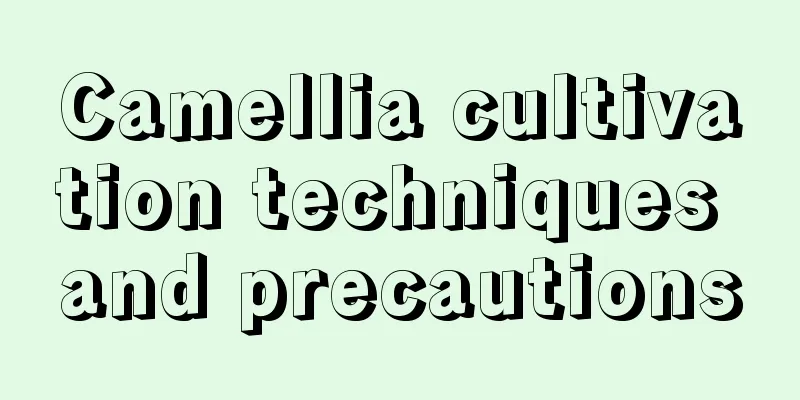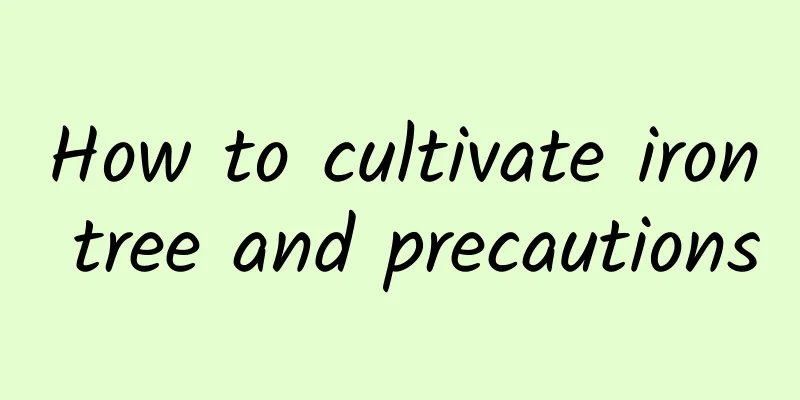Camellia cultivation techniques and precautions

|
Camellia is a very popular ornamental flower known for its showy flowers and evergreen leaves. However, many flower lovers are not good at growing camellia, because there are many things to pay attention to in growing camellia . So what tips and precautions do you need to pay attention to when growing camellia to ensure its healthy growth and flowering. Let’s learn together below. 1. Breeding techniques 1. Lighting management Camellia prefers a semi-shaded environment and avoids direct sunlight. In spring and autumn, it can be placed in a place with sufficient scattered light. In summer, it needs to be shaded to avoid direct sunlight, otherwise it will cause leaf burns. In winter, you can increase the light appropriately, but avoid prolonged exposure to cold direct light. 2. Temperature control The suitable temperature range for camellia growth is 15℃-25℃, and the temperature in winter should not be lower than 5℃, otherwise frostbite may occur. During the high temperatures in summer, cooling measures need to be taken, such as spraying water and ventilation, to avoid the temperature exceeding 30℃. 3. Soil selection Camellia has high requirements for soil and needs to choose loose, fertile, well-drained slightly acidic soil (pH between 5.5-6.5). You can mix leaf mold, garden soil and river sand in a ratio of 3:2:1, or you can add a small amount of decomposed organic fertilizer . 4. Watering management Camellia likes moisture, but avoids waterlogging. Watering should follow the principle of "water when dry and water when wet", that is, water after the soil surface is dry, and water thoroughly to ensure that the water can penetrate to the roots. In summer, when the temperature is high, you need to increase the frequency of watering, and in winter, reduce watering and just keep the soil slightly moist. 5. Fertilization method Camellia needs to be fertilized regularly during its vigorous growth period. Generally, a thin liquid fertilizer is applied once a month, such as decomposed bean cake water or special flower fertilizer. During the bud stage, additional phosphorus and potassium fertilizers can be applied to promote bud development and flower opening. 6. Pruning and shaping Camellia grows fast and needs regular pruning to maintain a good plant shape and ventilation and light. When pruning, you can remove diseased and weak branches, overcrowded branches and overgrown branches to promote the healthy growth of the plant. 7. Reproduction Method Cutting propagation: Cuttings are carried out in May-June or September-October. Select semi-lignified branches of the current year, cut them into 10-15 cm long cuttings, insert them into loose substrate, keep moist, and they will take root in about 40-50 days. Grafting propagation: commonly used for the propagation of excellent varieties. The grafting time is generally in early spring or autumn. Choose healthy plants as rootstocks and use cutting grafting or approach grafting. 2. Precautions 1. Avoid stagnant water Camellia roots are afraid of waterlogging, and long-term waterlogging will cause root rot. Therefore, when watering, make sure the soil drains well to avoid water accumulation in the pot. 2. Pay attention to ventilation Camellia needs a well-ventilated environment, especially when grown indoors in the hot summer and winter, air circulation must be maintained to avoid the breeding of diseases and pests. 3. Prevent and control pests and diseases Common diseases and pests of camellia include leaf spot, anthracnose, aphids, red spiders, etc. Check the plants regularly and deal with diseases and pests in a timely manner if found. You can use appropriate pesticides for prevention and control. 4. Change the pot at the right time Camellia generally needs to be repotted every 2-3 years. When repotting, you can trim the old roots and replace the new culture soil to promote the healthy growth of the plant. In short, camellia has a long flowering period, and it is necessary to maintain sufficient light and appropriate humidity during the flowering period. At the same time, avoid moving the plant frequently to avoid affecting the opening of the flowers. When the temperature is low in winter, camellia needs to be moved indoors or to a greenhouse to keep warm and avoid frostbite. When raising indoors, it is necessary to maintain a certain humidity to prevent the air from being too dry.
|
<<: Cultivation techniques and precautions for daffodils
>>: Cultivation techniques and precautions for Christmas cactus
Recommend
Large potted green plants suitable for the living room
1. Tiger Piranha Relatively speaking, it is very ...
Hami melon growth environment conditions and characteristics
Hami melon growth environment conditions and requ...
Is it better to spray nutrient solution on leaves or water the soil (with usage methods for common plants)
1. Is it better to spray leaves or water the soil...
How to make Euonymus bonsai
Tools for making Euonymus bonsai When planting Eu...
Sesame planting technology and management
Sesame is an extremely high-quality oil crop and ...
The growth environment and local conditions of the lucky tree
The growth environment and conditions of the luck...
What do turtles eat and how to feed them
Soft-shelled turtle is a precious economic animal...
Why lilies wilt after repotting, how to solve it
1. Root damage Reason: If the lily is not repotte...
How often should I water the longevity flower? How often should I water the longevity flower?
When watering the Kalanchoe, you must master the ...
How to plant chrysanthemum seeds
Chrysanthemum seed planting time For chrysanthemu...
How long is the growth cycle of a ginkgo tree?
Ginkgo Tree Growth Introduction Ginkgo grows in a...
Difference Between Hyacinth and Onion
1. Different types Hyacinth is a perennial herbac...
Hami melon's growing environment and local conditions
Hami melon growing environment and conditions Ham...
Is it profitable to grow ginseng? Planting prospects and profit analysis
Is growing ginseng profitable? At present, with t...
What month are cherries in season?
Cherries are a cultivated variety of European swe...









